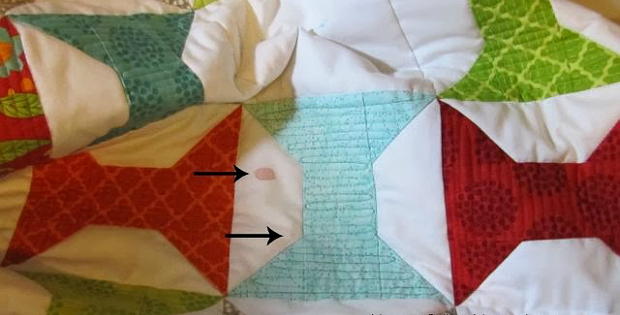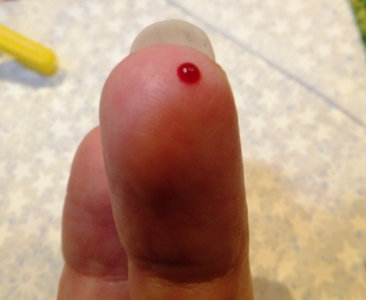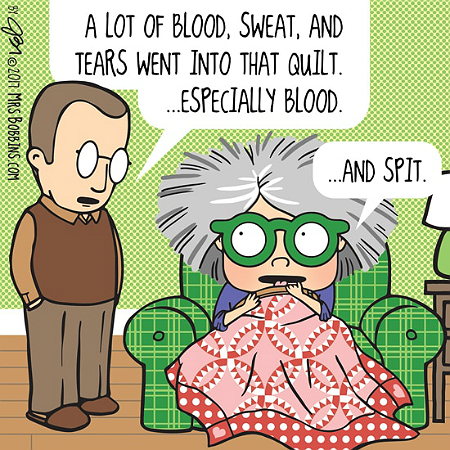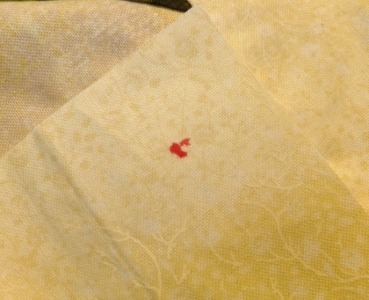How to Remove Blood Stains from a Quilt

Solutions for Both Fresh and Dried Stains!
Have you ever been hand stitching or pinning when you’ve pricked a finger and bled on a quilt? It happens all the time.
While your first instinct may be to soak the stain in cold water, which often works, there’s a simple old-fashioned remedy that works even better. Saliva.
Oops!
Chew on a piece of cotton thread, then dab the blood spot with the bundled thread. Chances are it will instantly disappear. Just make sure the saliva is clean. Coffee, tea and chocolate can stain.
The following article from What’s Under the Needle? explains how it’s done (the photos are missing but the text is good).
While your saliva works well on your blood, it won’t work on blood from someone else. It also may not work as well as you want on dried blood, either.
From MrsBobbins.com.
First, blood stains are set by heat, so never put a stained quilt in the dryer, press blocks with blood stains or try to remove a stain with hot water. Cool is key for successfully removing stains. However, with persistence you may be able to remove set-in blood stains from quilts that have been in the dryer.
Also, remember to put a thick fold of paper toweling under the spot before you start treatment so that the blood that is removed is soaked up. You don’t want it to land on another part of the quilt.
The most likely solution for dried blood stains is hydrogen peroxide (it works great on fresh stains, too). Soak a Q-tip or cotton ball with straight 3% household hydrogen peroxide (not the kind used on hair) and dab it on the blood spot.
You may need to let it sit for awhile (up to 30 minutes, away from bright light). Be sure to rinse the area well or wash the quilt when the stain is gone as hydrogen peroxide can break down fabric over time. Get more tips for using hydrogen peroxide here at Thrifty Fun.
Other things to try (one at time), from @bungalow59 at Quilting Board, are:
- White vinegar (soak for 30 min, then rinse)
- Toothpaste (rub gently onto fabric, let dry, then rinse)
- Meat tenderizer (be careful… wet fabric, sprinkle on, let dry, then rinse)
@Mariposa has had success on both white and colored fabrics by using a mix of hydrogen peroxide, Dawn and a bit of water.
You’ll find other suggestions from Quilting Board here.
Saltwater often works, too, as do oxygen-based pre-treatment products and laundry detergents (such as ERA, recommended by a nurse). Apply some to the stain, let it sit for awhile, then rinse or launder the quilt. Learn more about both of these methods here at eHow.
You’ll learn more about several of the methods mentioned above and find other suggestions in this excellent article from WikiHow.
Be sure to check the stains after washing a quilt and BEFORE putting it in the dryer. If stains remain, let the quilt air-dry before trying another technique.
Image Source: The image at the top of the page is from Alamosa Quilter.














